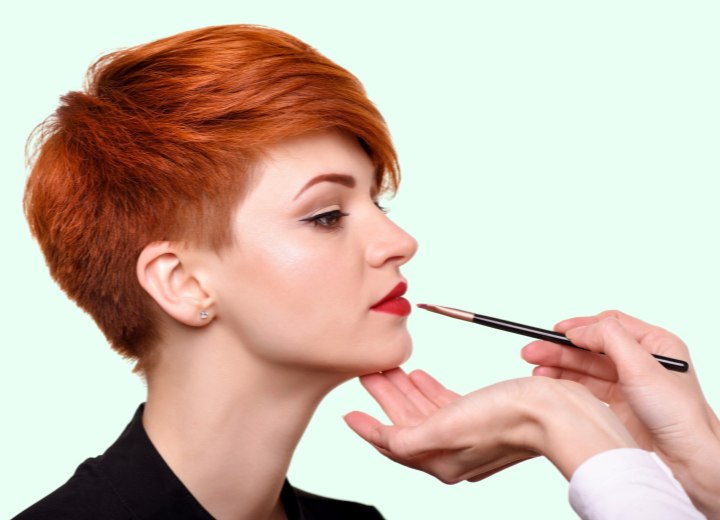Advanced Lip Color Techniques

The purpose of lip color is to mimic the blush response in the face and provide the impression of youthfulness. At least, this is the origin of using lip color. You see, when a person blushes, the blood-flow increases to the face, and the soft spongy tissue of the lips – which is translucent – grows darker from the blood seen through the skin of the lips. Lipstick is meant to mimic this response so that the person appears younger and more innocent, and thereby more appealing.
Lipstick
This is probably the product that comes to mind whenever most people think of lip color. Generally, it’s found as a wax-based “stick” that is applied to the lip surface the way one would use a crayon. Its shape is generally intended to make applying the product easier, though it can often wear down or become distorted by heat and other factors. (My mom was forever finding pools of waxy color in the bottoms of her purses or on car upholstery from leaving her lipsticks in the hot car while shopping or visiting away from home.
Lipstick’s specific formula is designed to serve two purposes: moisturize & protect the lips and add enhancing color to the lips. The original formulas of lipstick used things like wax and whale blubber to accomplish this, and modern formulas have developed all-natural and animal-friendly versions. Other lipstick formulas were more of a cream or paste that is dispensed by a sponge-tipped or brush-tipped wand applicator to give an easily-applied, smooth finish. The benefits of this formula are that the color is – generally - more-evenly applied, while the finish is typically shinier and gives a wetter look.
The drawback to these more liquid lipsticks is that they tended to wear off more easily. Since this means more-frequent re-applying, it also means more cost in the long-term because the product gets used up faster. In spite of this, the liquid/creamy lip color products are still very popular because of the silky, smooth, and light feel.
There are also long-wear versions of lipsticks, that usually come with a “sealant” product to try to lock the lipstick in place – either by creating a barrier to prevent the lipstick from rubbing off when eating, drinking, kissing or talking, or by solidifying the texture of the lipstick in order to make it harder to wear off. These generally get mixed reviews – some like the long-wear aspect enough to put up with what they deem are “minor” inconveniences in texture and feel, while others think the whole process is too unwieldy and the feel is too inhibiting. They deem it easier to simply re-apply their normal lipstick.
Lip Stain
The second category of lip color is generally called “lip stain”. These products can be just as viscous as the creamier lipstick formulas or they may simply appear like darkly-colored water. The purpose of lip stain is in the name. They are simply designed to impart color to the skin of the lips. As the name implies, they do in fact, stain the skin, and therefore offer long-lasting color. The longevity of the color imparted by lip stain is significantly greater than that of regular lip color.
Many women love lip stains for the simple reason that they allow you to have long lasting color, and allow you to enjoy normal activities without having to fear losing the color or re-apply to keep it looking fresh (at least, not as often). They also love the fact these products are generally much lighter on the lips and typically feel most like wearing nothing at all. Even the heavier formulas are generally no heavier than lip gloss.
The drawback to lip stains is that they don’t afford the wearer the kind of protection and moisturizing that many traditional lipsticks and glosses offer. In fact, some alcohol-based lip stains can leave the lips feeling dry and tacky. They also don’t offer the kind of “smoothing” and “filling” that some lipstick offers. If your lips tend to be heavily textured with grooves and lines (a not-uncommon occurrence) lip stains won’t usually leave the surface looking smooth the way many lipsticks can.
Because of this, lip stains are generally preferred by those with smoother, plumper lips, or else are paired with a secondary product like a clear or lightly-tinted gloss to add shine, smoothness and a plumper appearance to the lips.
Continue reading ... Last page